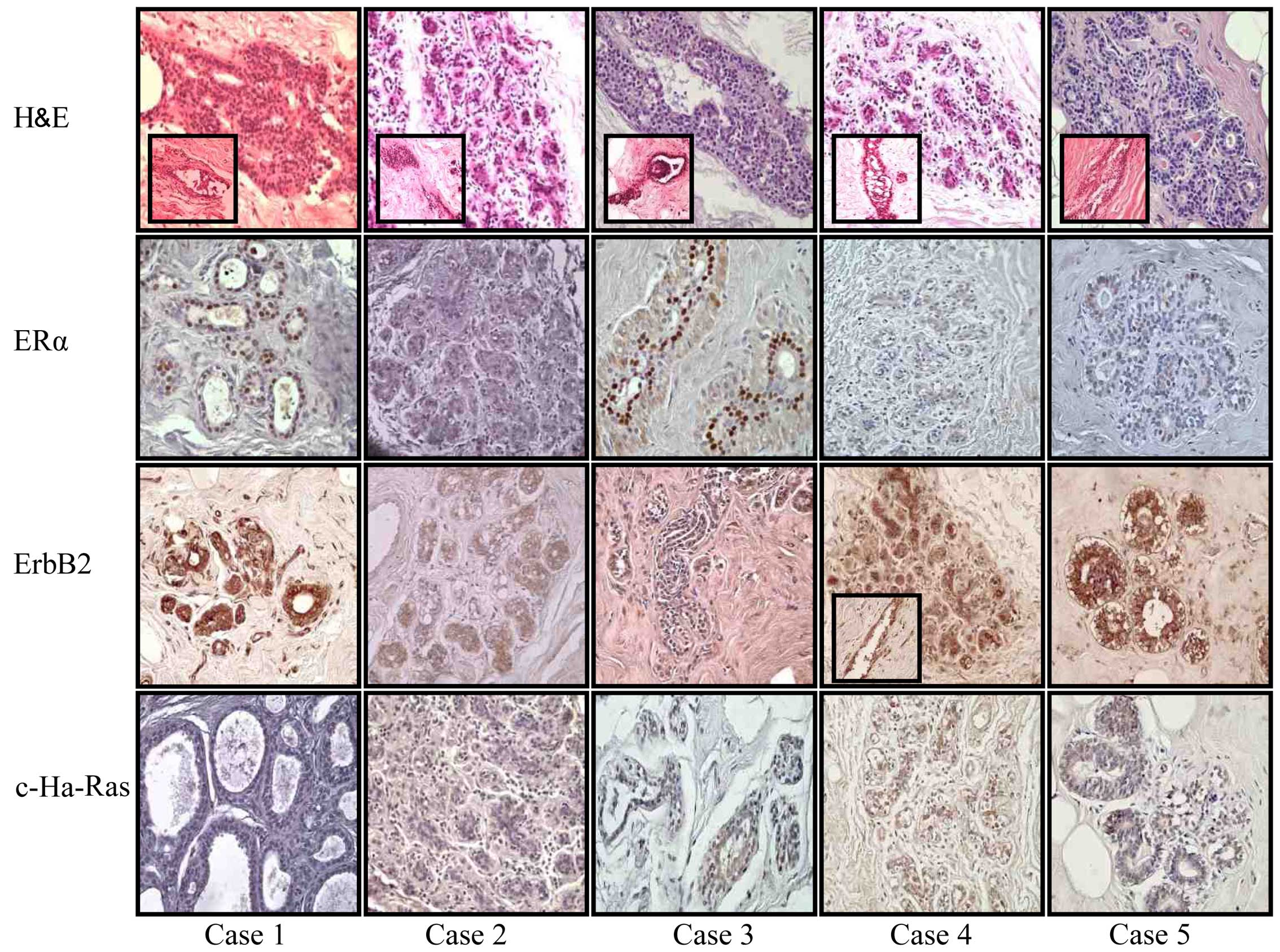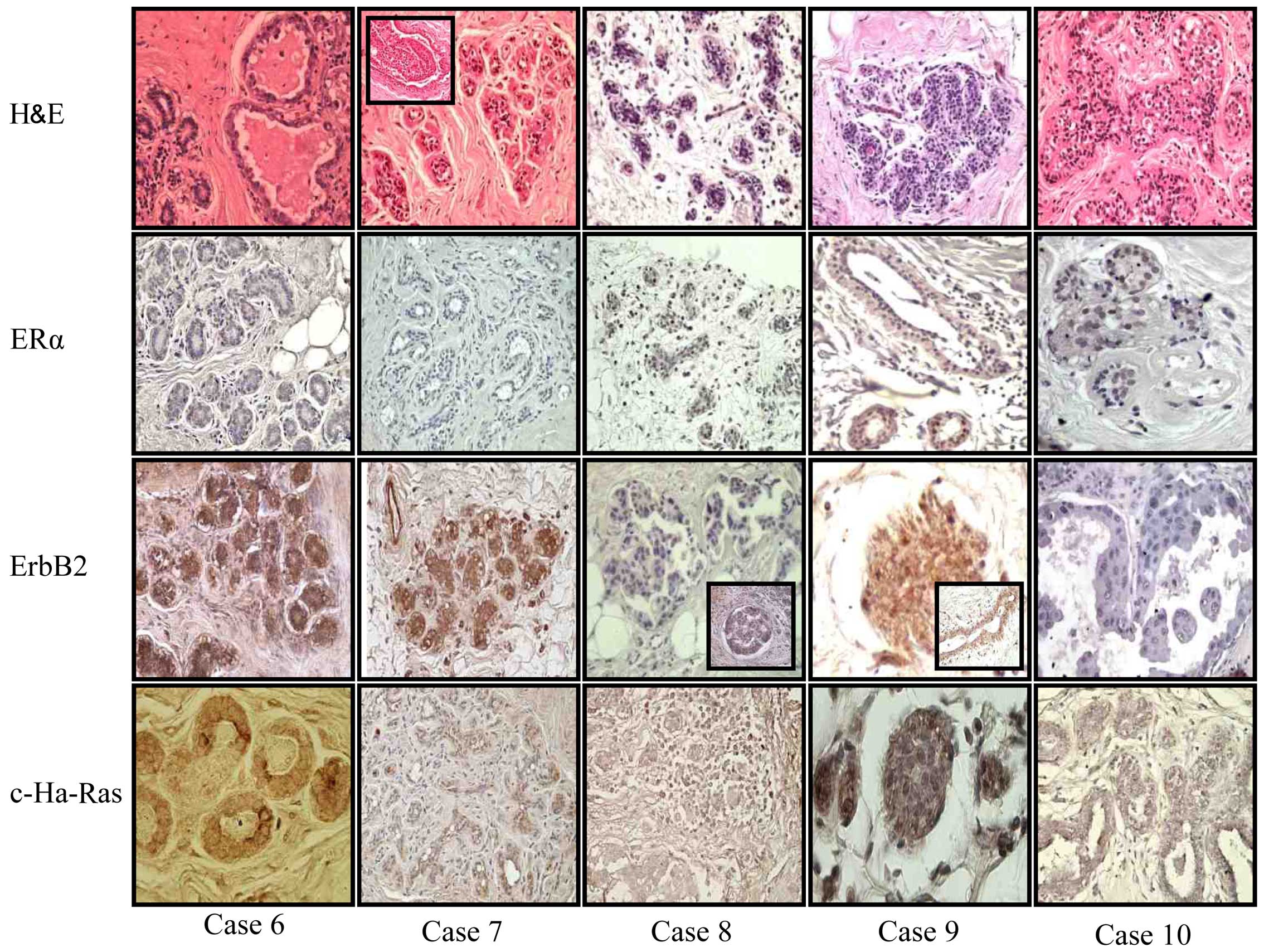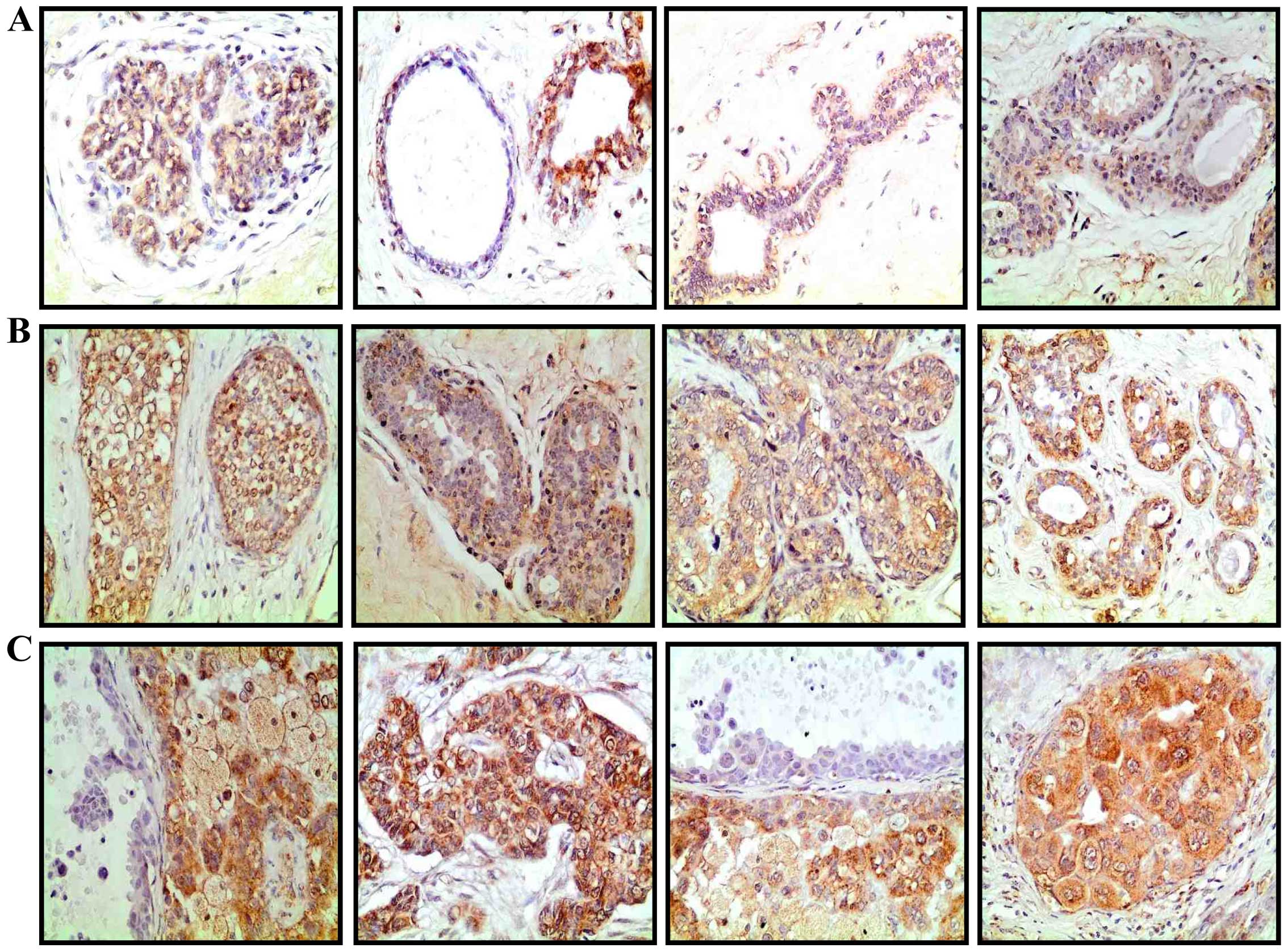|
1
|
Azzopardi JG, Ahmed A and Millis RR:
Problems in breast pathology. Major Probl Pathol. 11:i–xvi, 1–466.
1979.PubMed/NCBI
|
|
2
|
Dupont WD and Page DL: Risk factors for
breast cancer in women with proliferative breast disease. N Engl J
Med. 312:146–151. 1985. View Article : Google Scholar : PubMed/NCBI
|
|
3
|
Tsuchiya A, Kanno M, Nomizu T, Hatakeyama
Y, Kimijima I and Abe R: Clinical characteristics of breast cancer
patients with family history. Fukushima J Med Sci. 44:35–41.
1998.PubMed/NCBI
|
|
4
|
De Mascarel I and MacGrogan G: Management
of breast epithelial atypia. Ann Pathol. 27:182–194. 2007.(In
French). View Article : Google Scholar : PubMed/NCBI
|
|
5
|
de Mascarel I, Debled M, Brouste V,
Mauriac L, Sierankowski G, Velasco V, Croce S, Chibon F, Boudeau J,
Debant A, et al: Comprehensive prognostic analysis in breast cancer
integrating clinical, tumoral, micro-environmental and
immunohistochemical criteria. Springerplus. 4:5282015. View Article : Google Scholar : PubMed/NCBI
|
|
6
|
Walker RA, Hanby A, Pinder SE, Thomas J
and Ellis IO: National Coordinating Committee for Breast Pathology
Research Subgroup: Current issues in diagnostic breast pathology. J
Clin Pathol. 65:771–785. 2012. View Article : Google Scholar : PubMed/NCBI
|
|
7
|
Spandidos DA and Agnantis NJ: Human
malignant tumours of the breast, as compared to their respective
normal tissue, have elevated expression of the Harvey ras oncogene.
Anticancer Res. 4:269–272. 1984.PubMed/NCBI
|
|
8
|
Agnantis NJ, Parissi P, Anagnostakis D and
Spandidos DA: Comparative study of Harvey-ras oncogene expression
with conventional clinicopathologic parameters of breast cancer.
Oncology. 43:36–39. 1986. View Article : Google Scholar : PubMed/NCBI
|
|
9
|
Agnantis NJ, Petraki C, Markoulatos P and
Spandidos DA: Immunohistochemical study of the ras oncogene
expression in human breast lesions. Anticancer Res. 6:1157–1160.
1986.PubMed/NCBI
|
|
10
|
Efremidis AP, Agnantis NJ, Patra F,
Papadopoulou C and Spandidos DA: Clinical significance of elevated
p21 ras oncogene expression in breast cancer patients. Cancer J.
2:288–291. 1989.
|
|
11
|
Spandidos DA, Yiagnisis M, Papadimitriou K
and Field JK: Ras, c-myc, and c-erbB-2 oncoprotein expression in
human breast carcinomas. Anticancer Res. 9:1385–1394.
1989.PubMed/NCBI
|
|
12
|
Gruver AM, Portier BP and Tubbs RR:
Molecular pathology of breast cancer: The journey from traditional
practice toward embracing the complexity of a molecular
classification. Arch Pathol Lab Med. 135:544–557. 2011.PubMed/NCBI
|
|
13
|
Park S, Koo JS, Kim MS, Park HS, Lee JS,
Lee JS, Kim SI and Park BW: Characteristics and outcomes according
to molecular subtypes of breast cancer as classified by a panel of
four biomarkers using immunohistochemistry. Breast. 21:50–57. 2012.
View Article : Google Scholar : PubMed/NCBI
|
|
14
|
Perou CM, Sørlie T, Eisen MB, van de Rijn
M, Jeffrey SS, Rees CA, Pollack JR, Ross DT, Johnsen H, Akslen LA,
et al: Molecular portraits of human breast tumours. Nature.
406:747–752. 2000. View
Article : Google Scholar : PubMed/NCBI
|
|
15
|
Lerwill MF: Current practical applications
of diagnostic immunohistochemistry in breast pathology. Am J Surg
Pathol. 28:1076–1091. 2004. View Article : Google Scholar : PubMed/NCBI
|
|
16
|
Abdel-Fatah TM, Powe DG, Hodi Z,
Reis-Filho JS, Lee AH and Ellis IO: Morphologic and molecular
evolutionary pathways of low nuclear grade invasive breast cancers
and their putative precursor lesions: Further evidence to support
the concept of low nuclear grade breast neoplasia family. Am J Surg
Pathol. 32:513–523. 2008. View Article : Google Scholar : PubMed/NCBI
|
|
17
|
Moriya T, Kanomata N, Kozuka Y, Fukumoto
M, Iwachido N, Hata S, Takahashi Y, Miura H, Ishida K and Watanabe
M: Usefulness of immunohistochemistry for differential diagnosis
between benign and malignant breast lesions. Breast Cancer.
16:173–178. 2009. View Article : Google Scholar : PubMed/NCBI
|
|
18
|
Dewar R, Fadare O, Gilmore H and Gown AM:
Best practices in diagnostic immunohistochemistry: Myoepithelial
markers in breast pathology. Arch Pathol Lab Med. 135:422–429.
2011.PubMed/NCBI
|
|
19
|
Leong AS and Zhuang Z: The changing role
of pathology in breast cancer diagnosis and treatment.
Pathobiology: Journal of Immunopathology. Mol Cell Biol. 78:99–114.
2011.
|
|
20
|
Omi Y, Yamamoto T, Okamoto T, Obara T and
Kobayashi M: A useful immunohistochemical approach to evaluate
intraductal proliferative lesions of the breast and to predict
their prognosis. Histol Histopathol. 26:79–86. 2011.PubMed/NCBI
|
|
21
|
Candlish W, Kerr IB and Simpson HW:
Immunocytochemical demonstration and significance of p21 ras family
oncogene product in benign and malignant breast disease. J Pathol.
150:163–167. 1986. View Article : Google Scholar : PubMed/NCBI
|
|
22
|
Going JJ, Anderson TJ and Wyllie AH: Ras
p21 in breast tissue: Associations with pathology and cellular
localisation. Br J Cancer. 65:45–50. 1992. View Article : Google Scholar : PubMed/NCBI
|
|
23
|
Malumbres M and Barbacid M: RAS oncogenes:
The first 30 years. Nat Rev Cancer. 3:459–465. 2003. View Article : Google Scholar : PubMed/NCBI
|
|
24
|
Giltnane JM and Balko JM: Rationale for
targeting the Ras/MAPK pathway in triple-negative breast cancer.
Discov Med. 17:275–283. 2014.PubMed/NCBI
|
|
25
|
Calaf GM and Hei TK: Establishment of a
radiation- and estrogen-induced breast cancer model.
Carcinogenesis. 21:769–776. 2000. View Article : Google Scholar : PubMed/NCBI
|
|
26
|
Lakhani SR, Ellis IO, Schnitt SJ, Tan PH
and van de Vijver MJ: WHO classification of tumors of the breast.
International Agency for Research on Cancer. Lyon: 2012.
|
|
27
|
Zhang PL, Calaf G and Russo J: Allele loss
and point mutation in codons 12 and 61 of the c-Ha-ras oncogene in
carcinogen-transformed human breast epithelial cells. Mol Carcinog.
9:46–56. 1994. View Article : Google Scholar : PubMed/NCBI
|
|
28
|
Calaf G, Zhang P, Alvarado M, Estrada S
and Russo J: C-ha-ras enhances the neoplastic transformation of
human breast epithelial-cells treated with chemical carcinogens.
Int J Oncol. 6:5–11. 1995.PubMed/NCBI
|
|
29
|
Roy D, Calaf G and Hei TK: Allelic
imbalance at 11p15.5–15.4 correlated with c-Ha-ras mutation during
radiation-induced neoplastic transformation of human breast
epithelial cells. Int J Cancer. 103:730–737. 2003. View Article : Google Scholar : PubMed/NCBI
|
|
30
|
Calaf GM and Roy D: Cancer genes induced
by malathion and parathion in the presence of estrogen in breast
cells. Int J Mol Med. 21:261–268. 2008.PubMed/NCBI
|













